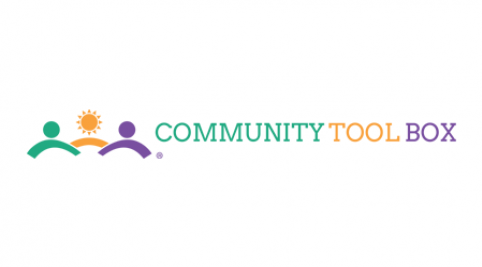Curricula previously published by the Southern Rural Development Center.
-

CARE: Creation, Attraction, Retention, Expansion
CREATION, ATTRACTION, RETENTION, EXPANSION. A dual approach plan to community economic development that calls for action in both the creation of a large overall community strategic plan and the individualized coaching of business leaders as a means to attain needed economic growth.
-

Cashing in on Business Opportunities
Written at a basic level by nationally recognized Extension small business experts, Cashing is a dynamic curriculum with additional topics and supporting Webinars in development. Originally developed by the CSREES Home-Based and Micro-Business National Design Team as a part of the Communities in Economic Transition National Initiative in 1997, Cashing has undergone a complete revision to address business practices and concerns.
-

Community Choices: Public Policy Education Program
The Community Choices program is designed to engage communities in a systematic assessment of the linkages between its human resource attributes and its economic development opportunities.
-

Community Development Extension Library
The Community Development Extension Library serves as a national repository of programs, curricula, tools, and fact sheets shared and used among Extension professionals who are part of Community Development Extension programs from across the United States. The CD Extension Library is a collaboration between the North Central Regional Center for Rural Development (NCRCRD) and the National Association of Community Development Extension Professionals (NACDEP). The Library is a resource for sharing programs and best practices throughout the Cooperative Extension System and a forum through which peers can exchange information on practices, program delivery, and impact.
-

Emergency Preparedness Initiative
Not everyone has the resources to prepare for, cope with, and recover from disasters. Factors such as medical challenges, limited financial resources, language barriers, limited access to transportation, and numerous socioeconomic aspects impact a disaster’s effect on households and communities. To gain clarity on how best to provide vulnerable households and communities with needed knowledge, tools and capacity for disaster response, the Southern Rural Development Center, in partnership with land-grant university Extension educators in five key states, has undertaken community-based field assessments to explore disaster awareness and preparedness among 10 strategically selected communities. Within these communities, the SRDC has been evaluating how well the resources from FEMA’s Emergency Preparedness Demonstration (EPD) Project prepare communities to address the unique needs facing local vulnerable audiences during times of disasters.
-

Improving Board and Organizational Effectiveness: Nonprofit Organization Board and Staff Training for Nonprofit and Faith-based Organizations
This nonprofit board and staff training curriculum was designed to show the best practices for operating nonprofit and voluntary organizations efficiently and effectively in a changing society.
-

LEAD: Leaders in Economic Alliance Development
Leaders in Economic Alliance Development, or LEAD, is designed to build capacity in counties or regions through a short partnership development and planning process that enables local residents to accomplish a goal. The purpose of LEAD is to accomplish specific tasks during each session that will lead toward the development of leadership skills and a short plan that can be implemented by the team. Leaders – Focuses on building and strengthening leadership skills in the community; Economic – Concentrates on opportunities to enhance the local economy; Alliance – Fosters the development of new partnerships within the community; and Development – Gets things done!
-

Mapping the Assets of Your Community: A Key Component for Building Local Capacity
SRDC Series #227, June 2002. In this material, a procedure for mapping the assets of a community is described. The approach is one that has been developed by John P. Kretzmann and John L. McKnight in their book, Building Communities From the Inside Out: A Path Toward Finding and Mobilizing a Community’s Assets. It is a process that can be used in any community, and offers an effective strategy for involving a variety of people and organizations in helping bring about improvements in a communities.While this document embraces many of the key concepts advanced in the Kretzmann and McKnight volume, we seek to extend their work in two important ways. First, we offer a creative strategy for uncovering the pool of individuals who have the ingredients for taking on greater community leadership responsibilities. Second, we discuss the role that community asset mapping can play in promoting the type of community development that is concerned with engaging local people in community enhancement efforts.
-

Preparing for the Future: A Guide to Community-Based Learning
SRDC 2009. Gene L. Theodori, Sam Houston State University. Across the nation, the desire for rural and small town community and economic development stakeholders to solve local problems and reduce socioeconomic disparities is increasingly recognized by state policymakers, local elected officials and citizens. Moreover, the need to attract and retain sufficient levels of human capital in rural areas to improve the overall quality of life is often a major priority for many communities. In the southern United States, county Extension agents (hereafter referred to as CEAs), particularly those located in nonmetropolitan counties, are increasingly being called upon to provide leadership for community and economic development efforts.
-

Ready Community
A companion to FEMA's Comprehensive Preparedness Guide 101, ReadyCommunity provides a process to help guide the work of local communities in planning for a disaster. Facilitated by a neutral coach, the initiative fosters broad civic participation, creates links to needed assets and resources within the community, and supplies current data to help guide the planning process.
-

Stronger Economies Together (SET)
SRDC 2010. Stronger Economies Together (SET) enables communities and counties in rural America to work together in developing and implementing an economic development blueprint for their multi-county region that strategically builds on the current and emerging economic strengths of that region. Creating, attracting and retaining jobs as a single rural county in isolation from other nearby counties is becoming increasingly ineffective. In today’s global marketplace, economic development progress is more likely to be realized when rural and metro counties work together as a region to assess their resources and then design and implement plans that build on their assets and comparative economic strengths. Launched in 2010 by USDA Rural Development and the nation’s four Regional Rural Development Centers and their land-grant university partners, this exciting initiative is now in place in more than 94 regions in 32 states.
-

The Community Tool Box
The Community Tool Box provides an extensive resource for free information on essential skills for building healthy communities. It offers more than 7,000 pages of practical guidance in creating change and improvement.
-

Turning Lemons into Lemonade: Public Conflict Resolution
SRDC Series #221. Ronald J. Hustedde, University of Kentucky; Steve Smutko, North Carolina State University; Jarad J. Kapsa, Universtiy of Kentucky. This manual is a train-the-trainers tool. It is designed to be taught and used primarily by Extension educators, community officials, and citizen leaders. The basic goal of the manual is to give workshop participants the applicable knowledge and skills to help teach others how to identify, understand, manage, and when possible and desirable, to resolve conflicts within their own communities. The materials that follow and the training sessions themselves are resources and guides. It is not our intention for Lemonade to be taken as a map on how to educate people to deal with conflict. These are concepts and skills that training participants can adapt to meet the needs of their constituency. Just as every community faces unique conflicts, so must the precise manner in which we confront and deal with conflict be of its own design. We hope you leave this training with (at least) two things: Different ways for understanding the sources and forms of conflict; and Concrete skills for addressing it.





